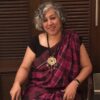Eswar describes a day, in July 2014, when he had attended the Tibet Festival, in Bangalore. It was the 79th birthday of His Holiness the XIV Dalai Lama. He was accompanying the medical team from Men Tsee Khang. Assisting them in setting the medical camp and coordinating registrations and helping people consult doctors. Here’s an insight in the lives of Tibetans, in exile, in the weekly column, exclusively for Different Truths.
In July 2014, I traveled to Bangalore to attend Tibet Festival, as part of ‘World Tibet Day’ celebrations commemorating the 79th birthday of His Holiness the XIV Dalai Lama. It gave me an experience that words cannot describe, staying and understanding the various facets of Tibetan life in exile.
Karnataka Chitrakala Parishath compound buzzed with Tibetan festivities, Tibetans from all settlements in Karnataka had assembled there for the festivities. Prayer flags fluttering in the air, Tibetans in their traditional costumes welcoming people, artists from schools performing traditional Tibetan instruments and dancing, young children running around, beautiful and charming Tibetan ladies with a warm smile and chatter, peace radiating from monks clad in their saffron robes.
I was accompanying the medical team from Men-Tsee- Khang, the Tibetan Medical, and Astrological Institute of His Holiness the Dalai Lama. Assisting them in setting the medical camp and coordinating registrations and helping people consult doctors, it was a wonderful experience. People swarmed at the counter wanting to see how the doctors do pulse diagnosis and wanted to experience it, apart from the genuine patients, who wanted to consult doctors.
It was a tough time managing crowds.
The day started with Tibetan prayers. A soulful fifteen minutes taking one into a magical trance, I love these sessions. Since it was a weekend celebration, Bangaloreans came in thousands to experience Tibetan way of life.
Reverberating music and soulful singing accompanied by traditional dance forms echoed the environs. People from the eight Tibetan settlements in Karnataka had got together to celebrate the birthday of His Holiness.
In between breaks I strolled around to visit the various stalls and exhibits, to know more and interact. Some of the interesting aspects of Tibetan culture will form the basis for my future articles in this column.
Thangka Painting: Tibetan Buddhist painting on cotton or silk depicting a Buddhist deity or story aristocratically framed in cloth with wooden rods which could be rolled when not in display, adorned the four corners of one of the stalls. The paintings were rich in colours and the attention to details was something which could make one look at it for hours. Most often these paintings are done over a couple of months and are spiritual in nature.
Thangka paintings are important resources, which document the history of Tibetan teachings, be it the life of Buddha, the various important Lamas, deities, and Bodhisattvas, and there are paintings about Tibetan Medical Science.
Tibetan Astrology and Medical Sciences: One of the most revered and popular aspects of Tibetan culture and science. Tibetan Astrology and Medical Sciences was recreated in exile and made popular in the country.
Men-Tsee- Khang was established, in 1916, by His Holiness the XIII Dalai Lama to institutionalise Astrology and Medical Science. In 1959, when His Holiness the XIV Dalai lama was forced to leave his nation and seek refuge in India, he was followed by 80,000 Tibetans. Amongst them were scholars and monks who helped in re-establishing the Astro and Medical Sciences.
Once provided asylum in Dharamshala, which became the seat of governance in exile, His Holiness the XIV Dalai Lama started setting up religious, cultural and educational institutions. Preserving the rich cultural heritage and tradition was given foremost importance so that the Tibetans practice and also the tradition lives in exile. This was visionary because one of the agenda and strategy of the illegal occupation of Tibet by the Chinese was to brainwash and erase history and traditions, which would prove Tibet to be an independent nation. Men-Tsee- Khang, the Tibetan Medical and Astrological Institute of His Holiness the XIV Dalai Lama was re-established in exile, in 1961.
Sand Mandala: Another interesting aspect of Tibet which I wanted to explore was the sand mandala. Having seen butter sculpture being made, I was curious about sand mandala. I went in search of two monks whose contacts I had got before my trip. Meeting them, they were very happy and took me around explaining the history of mandala and how sand mandalas are made.
Mandalas are geometric art formations which are believed to help in healing and purification. Monks prepare the mandala site with Tibetan spiritual chants and music and for days together work in team to draw the tantric art forms by using powder made by grinding stones. The mandalas have symbolic meanings and is part of symbolic offering to the universe. Once complete, a ceremonial destruction of the mandala takes place, erasing part by part until the entire geometry is erased. The sand is collected and kept in a jar, wrapped in silk and washed away in rivers, where it becomes one with nature.
Tibetan Food: I could experience the traditional Tibetan lunch and dinner since I was accompanying the team from Men-Tsee- Khang. I relished Tingmo (steamed bun) for lunch, along with rice and vegetables. A good part of the ground was dedicated to the Tibetan Food stalls to serve food for the Tibetan community and visitors.
Tibetan Opera and the Snow Lions: The evenings were dedicated to the cultural performances by students from Tibetan Children’s Village (TCV). Though I could not understand the dialogues and storyline, my Tibetan friends helped me in understanding the plot. I loved the performances especially the Tibetan Opera and Snow Lion Dance.
I traveled back carrying memories, which are still cherished, the understanding of life in exile and an insight in to the Tibetan culture and heritage.
©Eswar Anandan
Pix by author.






 By
By
 By
By
 By
By
 By
By